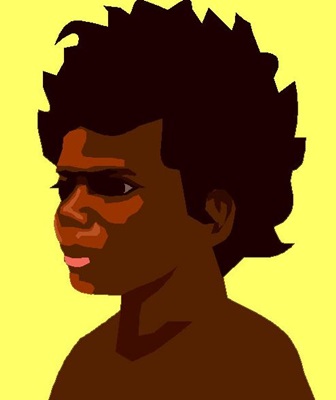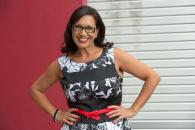AustLit
-
The following trail is linked to the The BlackWords Essays by Dr Anita Heiss, published by AustLit in 2015. They bring together the works, authors and organisations that are mentioned in the essays and support the teaching and incorporation of Aboriginal and Torres Strait Islander texts in teaching and general reading.
-
'...The main themes considered in contemporary Aboriginal authored children’s literature. [T]raverses a range of genres including picture books and song lyrics dealing with issues around country, identity, stolen generations and poetry. Some of these texts are referred to in other papers in this collection. (Heiss, Anita, Aboriginal Literature for Children: More Than Just Pretty Pictures, 2015)
-
'Indigenous control of writing projects is important. Collaborations between communities and those who have particular industry skills (such as writing and painting for publication) can also be essential in ensuring Aboriginal stories are prepared for maximum audience exposure. The Australia Council guide, Writing Cultures: Protocols for Producing Indigenous Australian Literature (2002 and reprinted in 2007), lists “communication, consultation and consent” as integral to producing the best Aboriginal literature possible. Importantly, even with such collaborations, copyright should rest with the Aboriginal parties—individuals or organisations.' (Heiss, Anita, Aboriginal Literature for Children: More Than Just Pretty Pictures 2015)
-
Writing Cultures: Protocols for Producing Indigenous Australian Literature by Australia Council for the Arts and Terri Janke
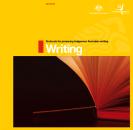 Image courtesy of publisher's website.See full AustLit entry
Image courtesy of publisher's website.See full AustLit entry'This guide in one of five protocol guides produced by the Australia Council for the Arts, which clearly spell out clearly the legal as well as the ethical and moral considerations for the use of Indigenous cultural material.' (Source: Writing, 2007:Intro)
(...more) -
Papunya School Book of Country and History by Papunya School Publishing Committee and Nadia Wheatley
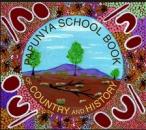 This image has been sourced from Web'Tells the story of how Anangu from five different language groups came to live together at Papunya. From the time of the first contacts with explorers, missionaries and pastoralists, through to the Papunya art movement and the Warumpi Band, this multi-layered text finally leads us to the development of the unique educational environment that is Papunya School.' Source: Libraries Australia (Sighted 14/09/2009). (...more)See full AustLit entry
This image has been sourced from Web'Tells the story of how Anangu from five different language groups came to live together at Papunya. From the time of the first contacts with explorers, missionaries and pastoralists, through to the Papunya art movement and the Warumpi Band, this multi-layered text finally leads us to the development of the unique educational environment that is Papunya School.' Source: Libraries Australia (Sighted 14/09/2009). (...more)See full AustLit entry -
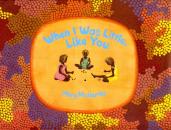 Cover image courtesy of publisher.See full AustLit entry
Cover image courtesy of publisher.See full AustLit entry'As Mary Malbunka shares her stories of playing with friends, building cubby houses, climbing trees, collecting sugarbag, digging for honey ants, hunting for lizards, and learning about the seasons, animals and plants, she creates a vivid picture of a truly Australian childhood in which country - ngurra is life itself.
Warm and accessible, this is essentially an oral story, and it contains a number of words in Luritja whose meaning is explained in context and also within an extensive glossary.
(...more) -
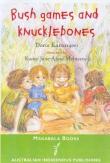 This image has been sourced from online."Bush Games and Knucklebones is a very special collaboration between best-selling author Doris Kartinyeri and well-known artist Kunyi June-Anne McInerney, who both spent time at Colebrook Childrens' home in South Australia in the 1950s." (Magabala Books website) (...more)See full AustLit entry
This image has been sourced from online."Bush Games and Knucklebones is a very special collaboration between best-selling author Doris Kartinyeri and well-known artist Kunyi June-Anne McInerney, who both spent time at Colebrook Childrens' home in South Australia in the 1950s." (Magabala Books website) (...more)See full AustLit entry -
'Important elements of history considered in Aboriginal picture books include the Stolen Generations and the forced removal of Aboriginal children as part of the government’s policies of protection and assimilation.' (Heiss, Anita, Aboriginal Literature for Children: More Than Just Pretty Pictures, 2015)
-
Down the Hole, Up the Tree, Across the Sandhills by Edna Tantjingu Williams and Eileen Wani Wingfield; and illustrated by kunyi June-Anne McInerney
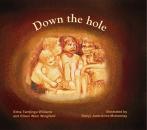 Cover image courtesy of publisher.'In the stark desert mining town of Coober Pedy when the government people came to take the fair-skinned Aboriginal children away they didn't always find them. They were down the hole up the tree across the sandhills . . . running from the State and Daisy Bates. This beautifully illustrated children's picture book is a true story. Includes informative historical and cultural supplementary material.' Source: Publisher's blurb (...more)See full AustLit entry
Cover image courtesy of publisher.'In the stark desert mining town of Coober Pedy when the government people came to take the fair-skinned Aboriginal children away they didn't always find them. They were down the hole up the tree across the sandhills . . . running from the State and Daisy Bates. This beautifully illustrated children's picture book is a true story. Includes informative historical and cultural supplementary material.' Source: Publisher's blurb (...more)See full AustLit entry -
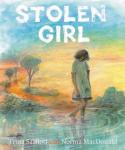 Courtesy of Magabal BooksSee full AustLit entry
Courtesy of Magabal BooksSee full AustLit entry'The story of the nameless fictional character in Stolen Girl, carefully and cautiously points out through text and images, the differences between life in the home she removed to (dorm life, routines, no family) to the family life she misses and dreams about (storytelling around the campfire, mornings with her mother on their verandah, fishing and swimming in the river).' Source: Heiss, Anita. Anita Heiss Blog, 14 March 2011. Sighted 16/3/2011)
(...more) -
'Language reclamation and maintenance are priorities for Aboriginal Australia because, of the 250 different Indigenous languages (most with several dialects) estimated at the time of First Contact, less than one tenth are still strong languages of everyday communication for Australia’s First Peoples, and fragmented collections of words are all that remain of many once full and complex languages.' (Heiss, Anita, Aboriginal Literature for Children: More Than Just Pretty Pictures, 2015)
-
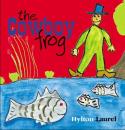 This image has been sourced from online.See full AustLit entry
This image has been sourced from online.See full AustLit entryThis wonderful book by Hylton Laurel is a favourite at Better Beginnings! The bright, clear illustrations perfectly capture the story of the bravest frog in the whole world as he digs, eats, and backflips his way through Noonkanbah Crossing...'(Source: Better Beginnings website)
(...more) -
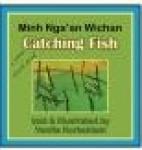 Image courtesy of Black Ink PressSee full AustLit entry
Image courtesy of Black Ink PressSee full AustLit entry'Written and illustrated by Indigenous youngsters, these small books tell down-to-earth stories that reflect the life and language of Far North Queensland.' (Source: Abbey's Bookshop website)
(...more) -
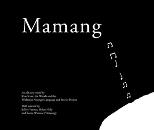 Image courtesy of publisher's website.See full AustLit entry
Image courtesy of publisher's website.See full AustLit entry'A brave young man travels the seas in the abdomen of a large whale ("mamang"). The man squeezes the heart of the whale and the old song he sings spurs it on to take him on a very special journey. It transports him far west of his home country, where his life is changed forever.
'This book is inspired by a story Freddie Winmer told the American linguist Gerhardt Laves at Albany, Western Australia, around 1931. It has been workshopped in a series of community meetings, which included some of Freddie Winmer's contemporary family.
(...more)Sponsored by The Wirlomin Noongar Language and Stories Project Incorporated Reference Group.
Text is published in Noongar language and English
-
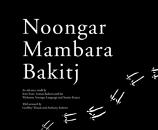 Image courtesy of publisher's website.'A young man follows a kangaroo track deep into the old people's country. Along the way he meets some spirit creatures ("mambara") who allow him to go on. But after he has hunted down the kangaroo, one mambara is angry and demands a fight ("bakitj"). All day they fight, until the Noongar discovers he is a magic person and defeats the mambara.See full AustLit entry
Image courtesy of publisher's website.'A young man follows a kangaroo track deep into the old people's country. Along the way he meets some spirit creatures ("mambara") who allow him to go on. But after he has hunted down the kangaroo, one mambara is angry and demands a fight ("bakitj"). All day they fight, until the Noongar discovers he is a magic person and defeats the mambara.See full AustLit entry
'This book is inspired by a story Bob Roberts and Freddie Winmer told the American linguist Gerhardt Laves at Albany, Western Australia, around 1931. (...more)Sponsored by The Wirlomin Noongar Language and Stories Project Incorporated Reference Group
Text published in Noongar language and English
-
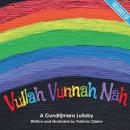 Image courtesy of publisher's website.See full AustLit entry
Image courtesy of publisher's website.See full AustLit entry'Vullah Vunnah Nah is a Gunditjmara [Dhauwurd Wurrung] lullaby, translated into English by Patricia Clarke. She has included both English and Gunditjmara words in the text and illustrated them with bright rainbows. This simple song could be mastered in the classroom quickly and shared with others. It also reminds that to have a rainbow, there must be rain, providing an opportunity for classroom discussion (on many levels)...' (Source: Publishers website)
(...more)Text published in Gunditjmara language and English
-
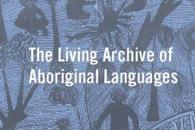 This image has been sourced from online.See full AustLit entry
This image has been sourced from online.See full AustLit entry'The Living Archive of Aboriginal Language is a digital archive of endangered literature in Australian Indigenous languages from around the Northern Territory.' This archive connects to the people and communities where the literature was created, allowing for collaborative research work with Indigenous authorities and communities.
Clicking on the website's map to enter the archive, opens hundreds of items in 25 languages from all over the Northern Territory. The Website gives comprehensive instructions on the use of the site for Linguists, Communities, teachers, and students and/or researchers.
(...more)Our database contains 397 works as from 3 September 2014
-
'It’s quite common for illustrated picture books by Aboriginal authors to have some form of moral woven through the storyline, largely due to individual creators being committed to social issues and cultural maintenance. ' (Heiss, Anita, Aboriginal Literature for Children: More Than Just Pretty Pictures, 2015)
-
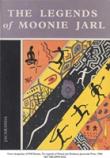 This image has been sourced from online.See full AustLit entry
This image has been sourced from online.See full AustLit entry'The Legends of Moonie Jarl is a collection of twelve traditional stories of the Butchulla/Badtjala people from Fraser Island and the adjacent mainland around Hervey Bay in Queensland. The Moonie Jarl of the title refers to the Butchulla/Badtjala elder responsible for passing traditional knowledge through generations of those people. Each story in this collection is incorporated into one of nine story-maps, supported by explanatory keys opposite each full-page illustration.' (Source: Juilet O'Conor, 'The Legends of Moonie Jarl : Our First Indigenous Children's Book,' La Trobe Journal :79 (2007): 66-81.
(...more) -
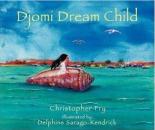 This image has been sourced from online.See full AustLit entry
This image has been sourced from online.See full AustLit entry'The little dream child placed herself in a giant coneshell and floated downstream towards the coast of Maningrida. As she was swept along, she sailed past the sacred dreaming waterhole called Djomi. It was in this sacred place where her destiny lay, where all her dreams would become reality.' (Source: On-line)
(...more) -
 Image courtesy of publisher's website.See full AustLit entry
Image courtesy of publisher's website.See full AustLit entry'The children Kutabah, Warabal and Bidu travel from their home to the lush rainforests of the Queensland Tablelands. This is their Nana’s land—the abundant rainforest—so far known only to them through her colourful stories. The Elders test Kutabah and Warabal as they travel with their younger brother, Bidu, and begin their transition into the adult world.' (Source: Publisher's website)
(...more) -
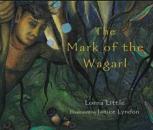 This image has been sourced from online.This is a story about the Wagarl, the sacred water snake who inhabited the waterways in the country belonging to the Nyoongar people. It tells how a little boy came to receive the Wagarl for his totem. (...more)See full AustLit entry
This image has been sourced from online.This is a story about the Wagarl, the sacred water snake who inhabited the waterways in the country belonging to the Nyoongar people. It tells how a little boy came to receive the Wagarl for his totem. (...more)See full AustLit entry -
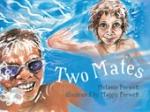 Image courtesy of Magabala Books.See full AustLit entry
Image courtesy of Magabala Books.See full AustLit entry'Two Mates is the true story of the special mateship between two young boys who have grown up together in the coastal town of Broome in Australia's north-west.
'Jack is Indigenous and Raf is a non-Indigenous boy who has spinabifida.Jack and Raf take the reader on a journey of their daily life growing up in Broome. Together they search for hermit crabs, go hunting for barni, fish for salmon, explore the markets, eat satays and dress up as superheros.'
'The fact that Raf is in a wheelchair is only revealed at the end of the story.(...more) -
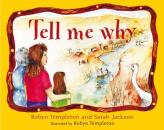 Cover image courtesy of the publisher.'A true story about a young girl's search for identity and desire to understand her Aboriginality. Seven-year-old Sarah goes back to her great-grandmother and asks questions about her family. This feel-good story looks at how family history shapes our childhood journeys.' Source: Publisher's blurb. (...more)See full AustLit entry
Cover image courtesy of the publisher.'A true story about a young girl's search for identity and desire to understand her Aboriginality. Seven-year-old Sarah goes back to her great-grandmother and asks questions about her family. This feel-good story looks at how family history shapes our childhood journeys.' Source: Publisher's blurb. (...more)See full AustLit entry -
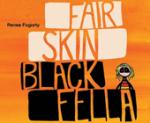 Courtesy of Magabala Books'This is the story of Mary, a young Aboriginal girl who lives on a red and dusty cattle station. Shunned by the other girls because of her fair skin, Old Ned, one of the community Elders, finally speaks up. With words of wisdom, he teaches the girls that Aboriginal identity transcends skin colour and that family, community, country, culture and spirituality is what being Aboriginal is really about.' Source: www.magabala.com (...more)See full AustLit entry
Courtesy of Magabala Books'This is the story of Mary, a young Aboriginal girl who lives on a red and dusty cattle station. Shunned by the other girls because of her fair skin, Old Ned, one of the community Elders, finally speaks up. With words of wisdom, he teaches the girls that Aboriginal identity transcends skin colour and that family, community, country, culture and spirituality is what being Aboriginal is really about.' Source: www.magabala.com (...more)See full AustLit entry -
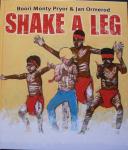 Scanned by AustLit.'From pizza shop to bora ground, here is a joyous celebration of food, dance and cultural understanding. When three young boys go to a pizza parlour and meet an Aboriginal chef who can speak Italian and make a deadly pizza, they're in for a surprise!' Source: www.allenandunwin.com/ (Sighted 26/05/2011). (...more)See full AustLit entry
Scanned by AustLit.'From pizza shop to bora ground, here is a joyous celebration of food, dance and cultural understanding. When three young boys go to a pizza parlour and meet an Aboriginal chef who can speak Italian and make a deadly pizza, they're in for a surprise!' Source: www.allenandunwin.com/ (Sighted 26/05/2011). (...more)See full AustLit entry -
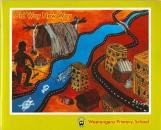 This image has been sourced from online.See full AustLit entry
This image has been sourced from online.See full AustLit entry'Old Way New Way looks at traditional art and culture alongside modern day mediums and ways of doing things. For example the kids use clapsticks old way and play musical instruments like the sax, new way. They like rock art old way and digital art new way.' (Source: Anita Heiss, Blog Spot, posted 2 Oct, 2011)
(...more)This work has been designed by the students as a home reader
-
From Little Things Big Things Grow by Paul Kelly and Kev Carmody; illustrated by Peter Hudson and Kalkarinji School children
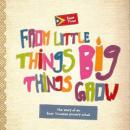 Image courtesy of publisher's website.See full AustLit entry
Image courtesy of publisher's website.See full AustLit entryFrom Little Things Big Things Grow presents the lyrics of the Kev Carmody and Paul Kelly song of the same title, alongside the history of the Gurindji people's plight for their traditional land in the Northern Territory.
The song recounts the story of when Vincent Lingiari and other Gurindji workers walked off the Wave Hill cattle station in 1966. What began as a strike over wages and conditions became an eight-year long struggle for the return of traditional lands.
(...more) -
Solid Rock Puli Kunpunka by Shane Howard and illustrated by Peter Hudson and the school children from Mutujulu, Kaltukatjara and Imanpa
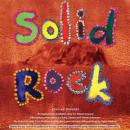 Image courtesy of publisher's website.See full AustLit entry
Image courtesy of publisher's website.See full AustLit entry'In 1982, Shane Howard's massive anthem "Solid Rock" from the album Spirit of Place, (recorded with his legendary band Goanna), reverberated across the airwaves and still does today.
'It was one of the first songs of its idiom to broach the subject of Aboriginal rights in Australia and impacted powerfully on a whole new generation of writers and musicians that followed. The album was released in 35 territories, worldwide.
'Solid Rock is an inspirational Australian story by singer songwriter Shane Howard, illustrated by the school children from Mutujulu, near Uluru, Australia.
(...more)Text published in English and Aboriginal Pitjantjatjara language
-
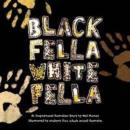 This image has been sourced from online.See full AustLit entry
This image has been sourced from online.See full AustLit entry''This song came to me when I was living in Papunya in 1982. Here I was in the minority as a whitefella working in a majority blackfella community but I was having a great time. I was mixing in and getting on well with everyone. Especially the young fellas my own age. We played footy and music together. So with that and the truth of the experiences I was having in Papunya the song just came to me. It was like a simple but powerful message. I still wasn't sure though, so I showed it to Sammy Butcher.
(...more)This song was first released in 1985 by The Warumpi Band.
-
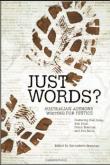 This image has been sourced from online.'In this powerful collection, Australian writers including Gail Jones, Eva Sallis and Frank Brennan explore the relationship between writing and justice, a relationship utterly dependent on informed, ethical readers. These essays - from poets, essayists, academics, playwrights, critics and novelists - demonstrate how it is possible for writing to articulate concerns of justice, enlighten the broader community and move citizens to action.' (Publisher's blurb) (...more)See full AustLit entry
This image has been sourced from online.'In this powerful collection, Australian writers including Gail Jones, Eva Sallis and Frank Brennan explore the relationship between writing and justice, a relationship utterly dependent on informed, ethical readers. These essays - from poets, essayists, academics, playwrights, critics and novelists - demonstrate how it is possible for writing to articulate concerns of justice, enlighten the broader community and move citizens to action.' (Publisher's blurb) (...more)See full AustLit entry
You might be interested in...

